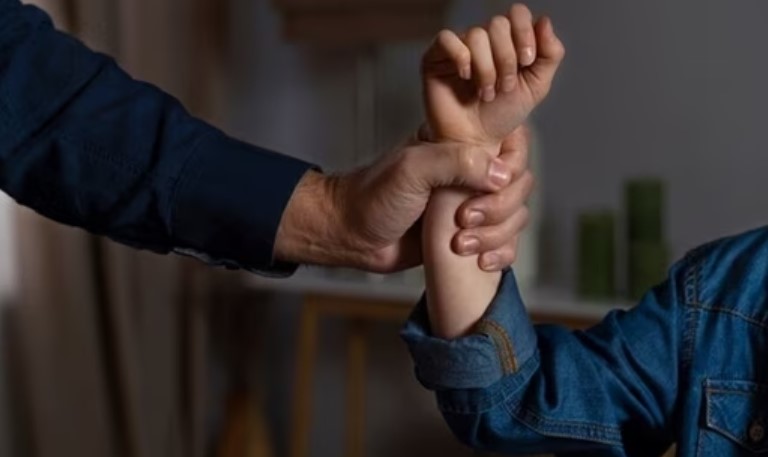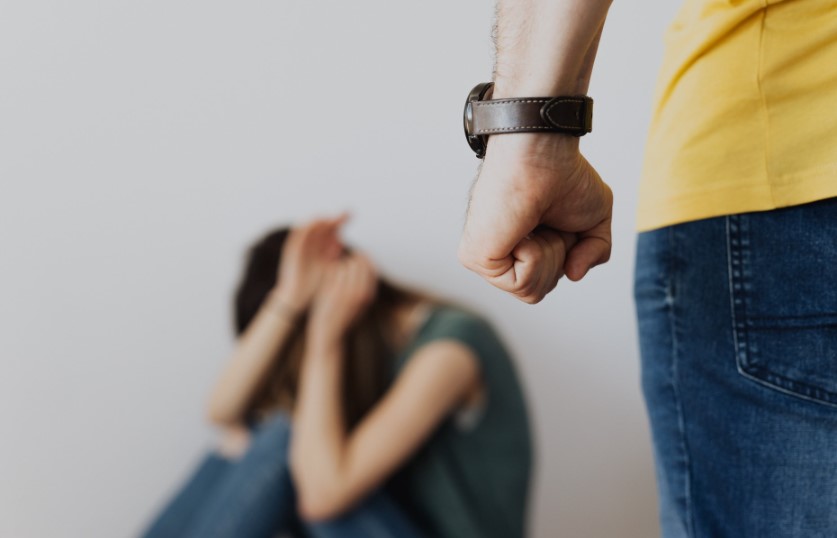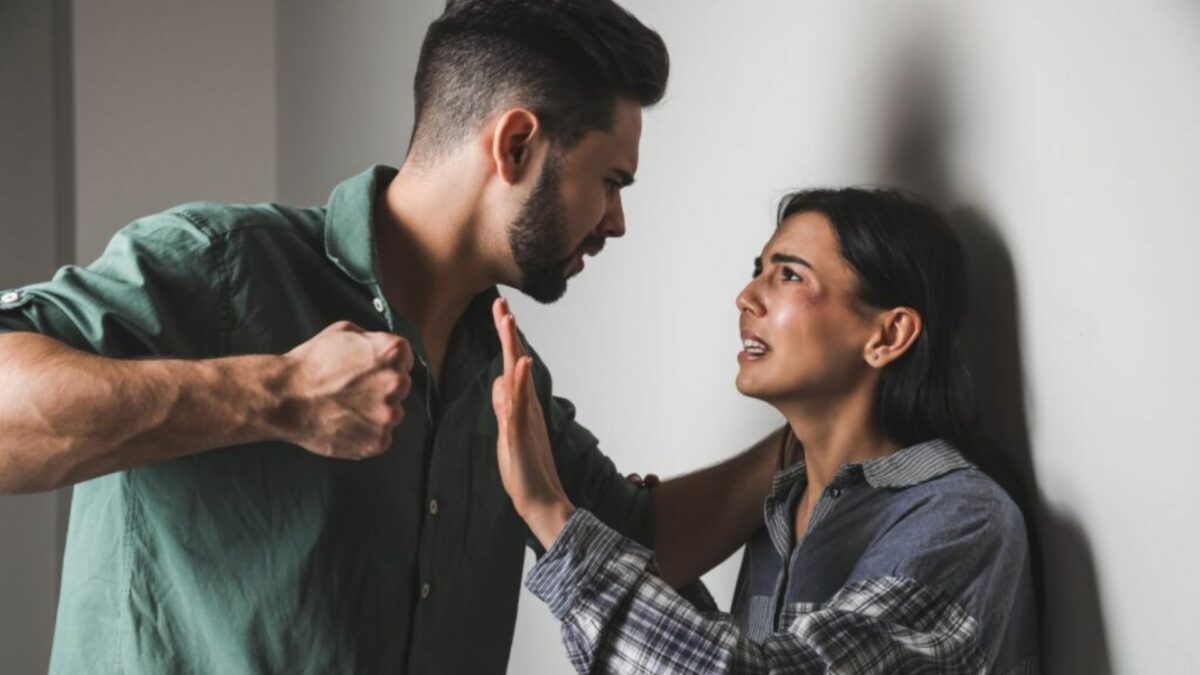You’re not alone. It’s a chilling reality for too many women – living under the shadow of domestic violence. But understanding the problem is the first step towards breaking free. This article aims to shed light on this dark corner of our society, offering insights and advice for those who find themselves in this nightmarish situation. We’ll discuss the signs of an abusive relationship, the psychology behind the abuser’s actions, and most importantly, the steps you can take to protect yourself and seek help. It’s a tough topic, but one that needs to be addressed head-on. Let’s start the conversation and work together to end domestic violence.
Understanding Domestic Violence

When discussing domestic violence, knowing and recognizing it constitutes the first hurdle. Your awareness empowers you to act, break the silence, and protect yourself and others affected. Comprehending the signs, symptoms, types can lead you to a path of recovery.
Signs and Symptoms of Abuse
Abuse often hides behind smiles and closed doors, making it hard to detect. Here are some common signs:
- Extreme jealousy: If your partner shows excessive envy, for example, over your friendships or activities outside of the relationship, it indicates a red flag.
- Control and isolation: For instance, the abuser may control who you meet, what you do, or where you go.
- Frequent blame and criticism: Abusive partners often criticize as a means of control, such as blaming you for their actions.
- Physical harm: This includes pushing, hitting, slapping, or any other kind of physical harm.
- Threats and intimidation: This could range from subtle threats to overt ones involving physical harm.
- Emotional disconnect: A victim may feel scared or anxious constantly, showing signs of depression or low self-esteem.
Each situation is unique, and these signs may vary. They serve as basic guidelines, acting as a catalyst to recognize what may potentially be an abusive relationship.
Types of Domestic Abuse
Misunderstanding often arises from not recognizing that abuse takes different forms, not just physical. Broadly, here’s a division of the types of domestic abuse:
- Physical abuse: This form involves any act causing pain or injury, such as hitting or burning.
- Emotional abuse: This form demeans or belittles the individual, instilling fear or shame. It might involve constant criticism, abandonment, and isolation.
- Economic abuse: Here, the abuser controls the financial resources, restricting the victim’s ability to maintain economic independence.
- Sexual abuse: Any unwanted sexual activity forced upon an individual is considered sexual abuse. It may include rape, sexual assault, or forcefully implementing sexual actions one does not want.
Knowledge of these types creates awareness of the broad spectrum of abuse. It equips you with the understanding needed to ensure you aren’t suppressing or ignoring your experience, based on the mistaken belief that an absence of physical violence means an absence of abuse. You deserve a safe and loving environment. Recognizing the signs and types of domestic abuse is your first step towards creating it.
Read More : 10-ways-to-make-everyday-romantic
The Impact of Physical Abuse on Victims

The repercussions of physical abuse extend beyond temporary physical injuries. They dig deep and inflict psychological and physical scars that linger far beyond the immediate aftermath of violence.
Psychological Effects
Physical violence brings profound psychological effects in its wake. For instance, sufferers often report post-traumatic stress disorder (PTSD), a recurring condition that haunts its victims with flashbacks and nightmares. For some, anxiety becomes a constant companion, leading to a multitude of panic attacks. Furthermore, depression and suicidal tendencies haunt victims, steeping them in a well of despair and self-destructive thoughts.
Victims oftentimes carry guilt, questioning their actions and wondering if they somehow provoked the violence. In many cases, a skewed self-perception arises, causing a plummeted self-esteem. Additionally, isolation from family and friends—engineered by the abuser—leads victims to a state of extreme loneliness. Consequently, this isolation fuels a vicious cycle of abuse and empowerment of the perpetrator.
Consider the sheer number of psychological scars victims of physical abuse wear:
| Effect | Description |
|---|---|
| PTSD | Haunting victims with flashbacks and nightmares |
| Anxiety | Leading to multiple panic attacks |
| Depression | Resulting in suicidal tendencies |
| Guilt | Questioning their actions, leading to plummeted self-esteem |
| Isolation | Engineered by the abuser, leading to a sense of extreme loneliness |
Physical Consequences
While psychological scars run deep, the physical wounds are not to be downplayed. Victims may suffer from Chronic Pain disorders due to the frequent and severe physical trauma. Another common aftermath is Traumatic Brain Injuries, depending on the severity of the beatings. Sexually transmitted diseases stand as an unfortunate outcome in cases where sexual abuse accompanies the physical violence. Unwanted pregnancies and associated complications are also alarming outcomes.
Below is a list of some physical ramifications that the victims of abuse might experience:
| Consequence | Description |
|---|---|
| Chronic Pain | Due to frequent and severe physical trauma |
| Traumatic Brain Injuries | Depending on the severity of beatings |
| Sexually Transmitted Diseases | Arises in cases where sexual abuse accompanies physical violence |
| Unwanted Pregnancy | And associated complications |
The aforementioned impacts—all devastating—are only the tip of the iceberg. Physical abuse, in all its forms, is utterly destructive, leaving its victims broken both psychologically and physically. It is imperative, evermore so, that light gets shed on these dark corners of society, that help gets extended to those in desperate need—for stopping the cycle of abuse is the first firm step towards mending the countless broken lives.
Read More : How-to-deal-with-a-narcissist-husband
Legal Options and Protections

There’s an undeniable need for victims of physical abuse to understand their legal options and protections, especially in cases where the abuser is a spouse. As a victim, your protection is of utmost priority, and there are legal measures available to address your concerns promptly.
Restraining Orders and Legal Assistance
Taking a step in the direction of your safety inevitably involves seeking legal assistance. There are organizations out there that provide free or low-cost legal representation to survivors of abuse. A common initial protective measure is obtaining a restraining order. This court-issued order, also known as a protective order, may restrict the abuser’s contact with you, protect your children, or order the abuser to vacate your shared home.
To cite an example, the National Coalition Against Domestic Violence (NCADV) provides resources for legal assistance, helping victims understand the nuances of obtaining a restraining order. They can guide you through the process, thereby alleviating some pressure.
Navigating the Legal System
Understanding the legal system is paramount, as it can sometimes feel complex and overpowering. Having the right entities by your side when navigating legal waters ensures you don’t feel alone or overwhelmed. Advocacy groups and legal aid societies can provide vital support during this stage. Services include helping you understand your legal rights, providing emotional support, and extending help with housing and childcare, if need be.
For instance, the National Domestic Violence Hotline provides comprehensive support in understanding your legal options. They share specifics about your state’s laws and connect you with the appropriate resources to fight your battle.
Integrating these legal protections into your actions can serve as an effective shield against further abuse, providing both the immediate safety you seek and the longer-term protections a court can offer. Embrace your right to safety and a life free from abuse.
Read More : 15-ways-to-support-your-partner-emotionally
Seeking Support and Resources

In the aftermath of abuse, utilize support resources and therapy options to facilitate healing and transition to a safer environment. Remember, you’re not alone on this journey – numerous organizations exist to provide assistance, bringing together a network of survivor communities that understand your situation.
Counseling and Therapy Options
Counseling offers you a safe space to share your experiences and feelings, creating a platform for healing to begin. Therapy sessions, led by a trained professional, allow you to understand and maneuver the web of emotions that come with such traumatic experiences. These sessions aren’t simply about discussing the past, but they provide tools and strategies to deal with the future as well.
For instance, Cognitive Behavioural Therapy (CBT) helps to manage the emotional response to traumatic events by altering destructive thought patterns, while Eye Movement Desensitization and Reprocessing (EMDR) involves processing traumatic memories to reduce their long-term impact. Moreover, seeking individual therapy doesn’t rule out the participation in group therapy, where survivors can connect and share their experiences.
Support Groups and Community Resources
Support groups often pave the path to recovery by offering a sense of community, where you can share experiences and coping strategies with fellow survivors. Participation in a support group instills a feeling of companionship, reducing feelings of isolation and loneliness often prevalent in abuse survivors.
Alongside support groups, countless community resources exist to provide help. National organizations like the National Coalition Against Domestic Violence and local non-profits offer resources such as safe homes, legal assistance, financial aid, and educational programs focused on self-reliance. From the Family Violence Prevention Services to local women’s shelters, resources are in place to cater to your unique needs in this difficult time.
Read More : Why-am-i-bored-in-my-relationship
Conclusion
You’re not alone in this struggle. Recognizing the signs of abuse is the first step towards gaining control over your life. It’s crucial to understand the physical and psychological impacts, and to reach out for help when you’re ready. Therapy, counseling, and support groups are valuable resources that can aid in your healing process. Organizations like the National Coalition Against Domestic Violence are there to assist with safe homes, legal aid, and financial support. Remember, it’s about reclaiming your life and moving forward. You have the strength and the right to live a life free from abuse. You’re worth it, and there are people and resources ready to help you make that transition.
Frequently Asked Questions
What types of domestic abuse are discussed in the article?
The article discusses four major types of domestic abuse: physical, emotional, economic, and sexual abuse.
What psychological impacts does physical abuse have on victims?
Physical abuse can have several psychological impacts on victims, including Post-Traumatic Stress Disorder (PTSD), anxiety, depression, guilt, and isolation.
Are the physical consequences of domestic abuse covered in the article?
Yes, the article does cover the physical consequences of abuse, which can include chronic pain and traumatic brain injuries.
Can survivors seek support and resources after undergoing abuse?
Absolutely. Survivors are encouraged to seek help through therapy options, counseling, and support groups. These resources can provide healing, a sense of community, and coping mechanisms to deal with the aftermath of abuse.
What kind of assistance do organizations provide survivors of domestic abuse?
Organizations like the National Coalition Against Domestic Violence and local non-profits offer resources such as safe homes, legal assistance, financial aid, and educational programs. These services can significantly aid survivors in transitioning to a safer environment and rebuilding their lives.

